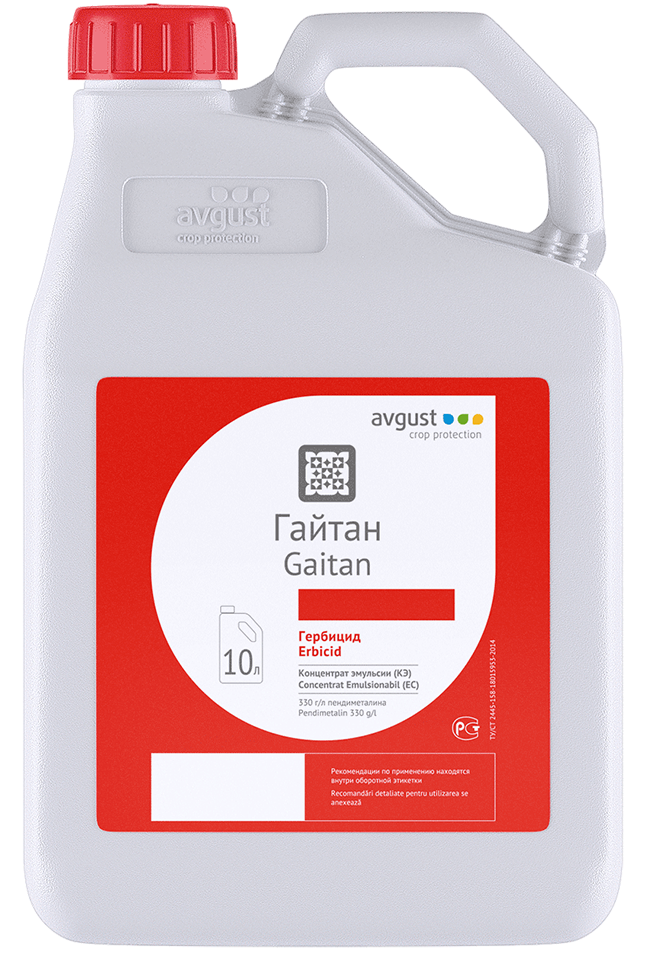
Гайтан
pendimethalin, 330 g/l

pendimethalin, 330 g/l
Advantages of the drug:
• destruction of many types of annual cereals and dicotyledonous weeds
• protection of crops from weeds for a long period
• creation of an effective herbicide “screen” that prevents weed germination
• high selectivity for cultivated plants
• safety in crop rotation
Range of action:
among cereals, foxtail, common broom, annual bluegrass, millet (species), blood-red crabgrass, bristleweed (species), etc. are sensitive to the drug. Among dicotyledons, sensitive to the herbicide are: speedwell (species), knotweed (species), medicinal grass , field mustard, smokeweed, chickweed, Theophrastus, stinging nettle, quinoa (species), buttercup (species), poppy, pigweed (species), forget-me-not field, black nightshade, shepherd’s purse, pikulnik (species), bedstraw tenacious, purslane, navel (species), wild radish, chamomile (species), field violet, acorn grass (species), lariat (species).
Mechanism of action:
inhibits the growth of the root system. Absorbed by primary roots and seedlings of weeds, which die soon after seed germination or emergence. It can also affect emerging sensitive weeds, if during treatment the weeds are in the phase of 1 – 1.5 leaves, and dicotyledons – up to 2 true leaves.
Period of protective action:
under favorable conditions, the protective effect of the drug can last up to 9 weeks.
| Culture | Weeds | Consumption rate of the drug, l/ha | Method and timing of drug treatment |
| Bow of all generations (except feather bow) | Annual cereals and dicotyledons | 2,3 – 4,5 | Spraying the soil before crop emergence |
| Sunflower | Annual cereals and dicotyledons | 3 – 6 | Spraying the soil before crop emergence |
| Carrots (except for bunched goods) | Annual cereals and dicotyledons | 3 – 6 | Spraying the soil before crop emergence |
Working fluid consumption:
200 – 400 l/ha.
Package:
canisters of 5 and 10 l.